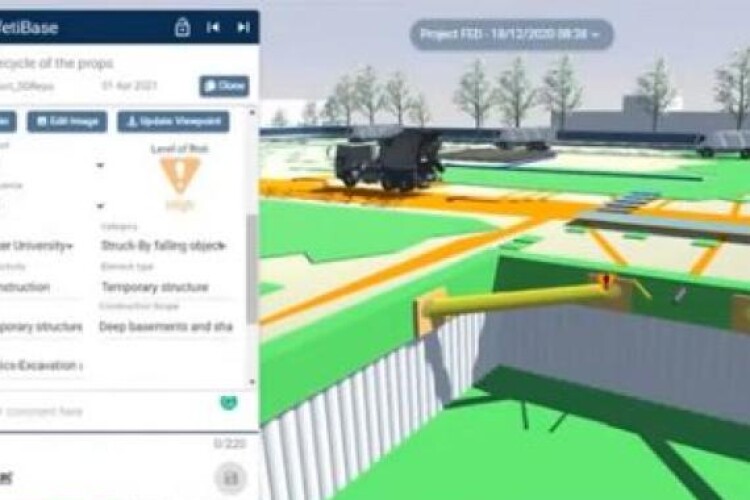The HSE’s Discovering Safety team has been working for the past two years with the construction industry, academia and tech providers to develop a library of standardised data and processes which can be incorporated into visualisation and modelling tools, such as building information modelling (BIM), to make construction safer.
Attaching sensors to site workers and machinery is an extension of this work. The goal is to improve zonal procedure accuracy and help manage out risk to workers before harm can occur
The trial will take place on a live construction project at pharmaceutical company AstraZeneca’s Macclesfield campus where EDF subsidiary Dalkia is building an extension.
“Our hope is that this initiative will pave the way for a more proactive, data-driven approach to safety, setting a new standard for the entire industry,” a Dalkia spokesperson said.
The first step in the trial is to plan out the safety zones on a BIM model to inform how zones can be demarcated on site using sensors. These zones will then be monitored using the BIM interface. The monitoring information will be used to improve week-on-week management of the safety zones, feeding back information to planners and designers about how effective these preventive measures are.

The BIM model uses Asite 3D Repo’s SafetiBase software. The technology to create, view and link data to models is not new, nor is the use of sensors on site linked to local networks, Discovering Safety said. But the ability to link and view feedback information directly on a construction design 3D/4D model interface has not been demonstrated before.
ASite 3D Repo founder and chief executive Jozef Dobos said: ”For a number of years now, our customers have been able to virtually identify health and safety risks within the 3D BIM environment using SafetiBase. But we wanted to provide more feedback from the construction sites too. In this project, for the first time, we are linking the virtual with the physical, thanks to the integration of wearable ‘internet of things’ (IoT) sensors by Plinx, which is really exciting.”
Plinx is a technology company that specialises in virtual barriers in industrial applications. Founder and chief executive Tommy Williams said: "This project builds upon Plinx's work in the Industrial Safetytech Regulatory Sandbox project: connecting sensors and 4D models to empower stakeholders in foreseeing on-site hazards, using safety zones for protection and informing improved future implementation. This first-of-a-kind solution will demonstrate how to connect commercially available technologies in order to drive improved safety performance."
AstraZeneca construction lead Dave Ayres said: “Learning from our last innovative project in Discovering Safety; the benefits from a client perspective were sometimes surprising. The 3D modelling was particularly useful for our end-user team who were able to make some fundamental changes to the design long before they had any impact on the schedule.”
Got a story? Email news@theconstructionindex.co.uk



